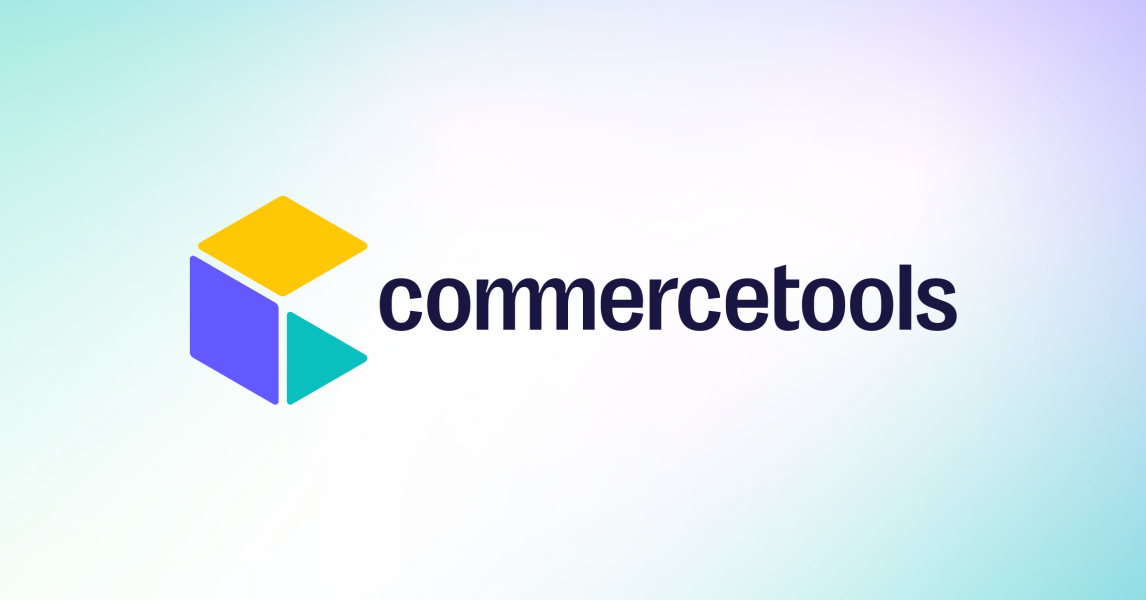In the ever-evolving eCommerce landscape, traditional online storefronts are no longer the sole avenue for businesses to sell products online. Enter headless eCommerce, a revolutionary concept that has the potential to transform your business. It’s not just about flexibility, customization, and seamless integration with various touchpoints.
Headless ecommerce platform empowers enterprises to deliver omnichannel experiences, boost performance, and elevate customer engagement by separating the commerce engine from the user interface.
As the demand for headless eCommerce solutions grows, the market has responded with many platforms catering to diverse business needs. This blog will delve into headless eCommerce, exploring its benefits and highlighting the best headless eCommerce platforms in 2025.
What Is Headless eCommerce?

With traditional eCommerce, the digital storefront (what the customer sees) and the backend (where all important data is stored) are connected. Headless commerce disconnects them, having them operate independently and communicate through an API.
You might wonder why anyone would do this. The three most important reasons for headless commerce include:
- The freedom to choose the best back end for an eCommerce store based on needs and requirements.
- Faster updates to the store, e.g., quicker storefront updates without dealing with back-end code. This ensures updates come through quickly.
- Improved eCommerce customer experiences across mobile applications, websites, etc.
Headless eCommerce is a viable option for businesses that want more control and flexibility over their online presence. This next section explains how headless eCommerce differs from traditional eCommerce, so read to the end.
What’s the Difference Between Traditional and Headless eCommerce?
The main difference between differences between traditional and headless eCommerce is illustrated in this table:
| Feature | Traditional eCommerce | Headless eCommerce |
| Architecture | All-in-one platform (front-end & back-end coupled) | Decoupled system (separate front-end & back-end communicating via APIs) |
| Ease of Use | Easy to set up and manage | Requires development expertise |
| Customization | Limited by platform templates and functionalities | Highly customizable |
| Scalability | Limited scalability | Easier to scale up |
| Cost | Can be cost-effective | It may require more investment in development |
| Ideal for | Beginners, small businesses | Businesses needing a unique brand experience, omnichannel strategy, or high scalability |
| Example | Pre-built online store | Custom-designed website or mobile app |
From afar, traditional eCommerce platforms are better for businesses that want their stores to be easy to use and to launch faster. Headless eCommerce is better for companies that want more control over customization, the ability to quickly scale, and have an omnichannel presence.
What Are the Benefits of Using Headless eCommerce?
Headless eCommerce presses traditional eCommerce regarding benefits, making it viable with flexibility and improved control. Essential benefits of headless eCommerce include:
Freedom of Choice
Traditional eCommerce platforms will lock businesses into pre-built features, while headless eCommerce lets companies pick the best front-end and back-end components. They can build stores with their preferred presentation layer (front end) and functionality (back end).
Headless eCommerce gives businesses more control over building and operating their stores. Personalization is essential to eCommerce stores, and headless eCommerce encourages personalization.
Improved Customer Experiences
With unique and personalized shopping experiences, headless commerce allows businesses to operate across different platforms (social media, mobile applications, websites). Additionally, custom headless development helps with product promotions and recommendations while improving the look and feel of the eCommerce store.
A welcoming and well-rounded customer experience is essential for eCommerce businesses to flourish. The customer experience can be improved with:
- Intuitive navigation and a visually appealing design
- Information-packed product descriptions
- High-quality product images and videos
- Mobile-optimized web pages
Quicker Innovation
eCommerce trends change all the time and your store needs to adjust to remain competitive. Headless commerce allows for smoother changes independent to the back end. eCommerce stores can push quick updates, conduct A/B features testing, and implement new ideas faster.
A quicker and smoother innovation ensures your store remains up to date in an incredibly competitive eCommerce environment. Faster innovation is one of the most important benefits of headless commerce.
More Agile and Scalable
Building on the last point, it is important to acknowledge the rate at which eCommerce businesses scale operations. One viral product or post about it can cause a surge in website traffic and sales. Additionally, growth can be forecasted but it becomes hard to pinpoint when it will happen.
Headless commerce allows business to develop easily scalable stores that require minimal effort to grow with your business. Start with scaling the back end to accommodate potential surges in web traffic and product volume and eventually move to the front end.
Omnichannel Support
Integrating eCommerce stores with different sales channels (AI chatbots, social media store fronts) is an essential step to ensure a seamless shopping experience. Omnichannel support ensures customers have access to your store across from a website, on the phone, or via their social media.
More avenues to purchase a product exponentially increases the chances of sales happening. Headless eCommerce architecture makes omnichannel integrations a lot easier because of an independent front end and back end.
Best Headless eCommerce Platforms in 2025
To get into headless eCommerce, here are the top platforms to pick from:
Shopify Plus
Shopify has long been the best eCommerce platform for small and medium-sized businesses. Its headless architecture is scalable and user-friendly with the Shopify app store that has countless applications.
Shopify plus comes with an intuitive and user friendly interface combined with a strong omnichannel commerce infrastructure. However, Shopify plus might not be a cost-effective solution for large scale businesses.
Commercetools
Businesses looking for extensive personalization and scalability can use Commercetools headless eCommerce to build an online store. The Commercetools platform is known for its extensive scalability and API-first approach.
Additionally, the Commercetools platform is a great option for stores with complex and comprehensive product catalogs. The only caveat with Commercetools is the extensive developmental resources required.
BigCommerce
BigCommerce is one of the most commonly used eCommerce platforms on the market. It has been around for a long time and for good reason. BigCommerce has a powerful headless eCommerce offering to work alongside its regular eCommerce offering.
Businesses using BigCommerce headless can leverage its B2B business capabilities, built-in SEO tools, and many others. However, BigCommerce headless eCommerce requires development experience for headless implementation.
Adobe Commerce Cloud (Magento)
Magento is often considered the best B2B eCommerce platform on the market. Its power lies in its extensive customization capabilities that work great for B2B businesses. Magento eCommerce stores are extensively scalable, secure, and come loaded with various features.
While Magento is geared towards B2B eCommerce stores, it can also work with B2C eCommerce businesses. The Magento headless commerce offering builds on its strengths but does have a complex setup process and requires professional maintenance to keep it running. You can learn about the pros and cons of Salesforce commerce cloud and Adobe Commerce before making any decision.
Salesforce Commerce Cloud
The Salesforce commerce cloud works in tandem with the now legendary Salesforce CRM to supercharge headless eCommerce. Businesses looking to integrate an eCommerce store with their Salesforce CRM can pick the Salesforce commerce cloud.
Opting for the Salesforce commerce cloud comes with integration to other Salesforce products and strong order management, making it promising for B2B businesses looking for a robust headless eCommerce solution.
Additionally, the platform leverages Salesforce Hyperforce to provide a more scalable and secure infrastructure for its services.
However, setting up the Salesforce commerce cloud is expensive and complex, requiring a monetary and time investment, but Salesforce B2B Commerce Cloud is ideal for all
How to Choose the Best Headless eCommerce Platform for Business?
When picking the right headless eCommerce platform for your business, here is the roadmap to get it done:
Knowing Business Needs
Picking a headless eCommerce platform depends on business needs, most notably:
- Business scalability
- Store customization
- Technical expertise requirements
- Expendable budget available
- Third-party integration requirements
Knowing your business needs helps make the decision process simpler because you have structure to work with.
Evaluating Platform Features
Online businesses require a variety of features for both form and functionality to perform. The most important platform features to evaluate include:
- Headless eCommerce abilities (strong API to connect front end with back end)
- Be PCI compliant and prioritize data security
- The platform being scalable to accommodate future business needs (traffic growth, product volume)
- Platform usability to know how easy it is to manage orders, products, and marketing content.
- An app marketplace for native and third-party integrations to enhance store functionality (marketing automation tools, payment gateways)
Know what your business needs and look for features accordingly. There is a lot to go around so take the time needed to understand what features are important to you.
Shortlisting Platforms
With business needs and features taken care of, it’s time to pick eCommerce platforms that work for you. For example, Shopify is great for small and medium businesses while Magento is ideal for larger and B2B business. Your research should look for various headless CMS options that seamlessly integrate with a headless commerce back-end. Clarity in the previous steps helps businesses pick the best head-less platforms for their business.
Working With A Development Team
If you want the best headless eCommerce platform but lack the experience, consider working with a headless commerce development team. A development team can help pick the right platform, build the front-end, and ensure it integrates seamlessly with the back-end system.
Consider the Folio3 eCommerce experts for all eCommerce needs and requirements. Whether you want to build a new store from scratch, migrate from one to the other, or improve an existing one, they have all the tools you need!
What is The Scope of Headless eCommerce in the Future?
The future of headless eCommerce is brimming with possibility because of the flexibility and agility of the eCommerce landscape. Here’s what the future of headless eCommerce looks like:
- Exponential growth as businesses learn about the benefits of switching to headless eCommerce from traditional platforms. Businesses that want more customization and control will pivot towards headless eCommerce.
- More businesses will want to build unique customer shopping experiences and headless commerce helps with custom product recommendations, promotions, and personalization.
- Omnichannel retailing will continue to grow using AI-powered voice assistants, IoT device integration, and social media storefronts. Customers will interact with brands more often across different platforms.
- The API economy will flourish, furthering innovation and development in headless commerce while streamlining headless eCommerce implementation.
Conclusion
The rise of headless eCommerce signifies a shift towards more agile, personalized online shopping experiences. As businesses strive to meet the demands of modern consumers, the flexibility and scalability offered by headless solutions have become increasingly essential. By embracing the best headless eCommerce platforms in 2025, companies can position themselves for success in a dynamic digital marketplace, driving innovation and maximizing customer satisfaction.
As we navigate the ever-changing eCommerce landscape, adopting headless architecture presents a strategic opportunity for businesses to differentiate themselves and adapt to evolving consumer preferences. By leveraging the capabilities of top headless eCommerce platforms and the expertise of a Salesforce B2C Commerce Developer, organizations can unlock new levels of creativity, efficiency, and customer-centricity, paving the way for sustained growth and competitiveness in the years to come.
FAQs
Is Headless Commerce the Future of eCommerce?
Yes, due to its flexibility and ability to create better shopping experiences.
What Is the Next Big Thing in eCommerce?
More personalized experiences across all shopping channels, driven by headless commerce.
Why Are Small Businesses Today Choosing Headless eCommerce?
Small businesses are increasingly choosing headless commerce for the freedom to pick the best technology for their needs and to create a unique brand experience.

Navaid Ahmed
Director Of Engineering at Folio3 Software | Head of Product Management
Navaid Ahmed is a Seasoned Salesforce CRM expert, who brings a wealth of experience in optimizing sales processes, enhancing customer relationships, and driving business growth. With a deep understanding of Salesforce's capabilities, Navaid specialize in crafting tailored solutions that empower organizations to streamline operations, boost productivity, and achieve their sales objectives.



